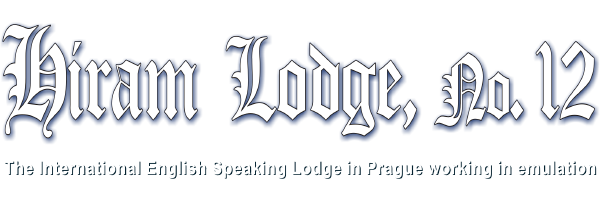Masons experience revival
Masons experience revival
By Adam Tschorn – Los Angeles Times
Published: Mon, May. 26, 2008 12:00AM
Modified Mon, May. 26, 2008 05:48AM
LOS ANGELES — In Los Angeles’ Los Feliz neighborhood, across from a 7-Eleven, a few dozen men in their early 20s to late 80s share a dinner behind closed doors. Some wear full tuxedos with bow ties and jeweled cuff links, some have shoulder-length hair, and others wear open-collared shirts that reveal the slightest filigree of tattoo arching across their chests.
Over Italian food, retired lawyers and judges sit elbow-to-elbow with owners of scrap metal yards and vintage clothing boutiques. They hold forth on philosophy, the weather; they rib one another and joke about saving room for cannoli. As they reach for seconds, they reveal skull-cracking rings emblazoned with a compass and a square.
Meet the millennial Masons. As secret societies go, it is one of the oldest and most famous. Its enrollment roster includes Louis Armstrong and Gerald Ford, and it has been depicted in movies such as “The Da Vinci Code” and “National Treasure.” Once more than 4 million strong (back in the 1950s), it has been in something of a popularity free-fall ever since. Viewed with suspicion as a bastion of antiquated values and forced camaraderie, the Masons have seen membership rolls plummet more than 60 percent to just 1.5 million in 2006.
Only now the trend seems to be reversing itself, and nowhere more noticeably than in Southern California. The reasons seem clear. In another Masonic Hall in the Los Angeles area a Sri Lankan-born banker, a sunglasses-wearing Russian immigrant and a continent-hopping Frenchman break bread, poke at their salads and chat about their health.
“For a time it looked as if Masonry was going into a sharp decline, if not the death throes,” said University of California, Los Angeles history professor Margaret C. Jacob, who has written extensively about the fraternal order. “But it looks like it may be making a comeback.”
That’s because the Freemasons, whose tenets forbid soliciting or recruiting members, have enthusiastically embraced the Internet as a way to leverage curiosity about an organization with its roots in Europe’s medieval stonemasons guilds. Freemasonry today sees itself as a thinking man’s salon, a learned society with a philanthropic bent.
“We had a record number of new members last year,” said Allan Casalou, grand secretary of the Grand Lodge of California. “We added 2,000 men, which is the most since 1998 and our seventh straight year of membership increases.”
New members break mold
And, to paraphrase that Oldsmobile campaign, these definitely aren’t your father’s Freemasons. They are bar owners, male models and olive-oil brokers. They are men like Zulu, an L.A. tattoo artist with a swirling Maori-inspired design inked across his face and a panoply of metal piercing his ears, nose and face. They are men like Jonathan Kanarek, who runs a men’s vintage clothing store on Hollywood Boulevard and whose retro chic wardrobe of polka-dot ascots, glen-plaid jackets and smartly pressed pocket squares earned him a spot on Esquire magazine’s 2007 list of best-dressed real men in America. And they are men like Daemon Hillin, whose surfer-dude looks and blinding white smile can be found on Japanese TV, where he plays sidekick and comic foil to the Japanese version of the Hilton sisters.
They are also all men who want to be part of an all-for-one and one-for-all brotherhood built on shared ideals, philosophical pursuits and a penchant for rings, aprons and funny hats. As Zulu bluntly put it: “I joined because I was looking for people to hang with that were like-minded but also hip and cool, and a lot of tattoo artists tend to be drunks and druggies.”
